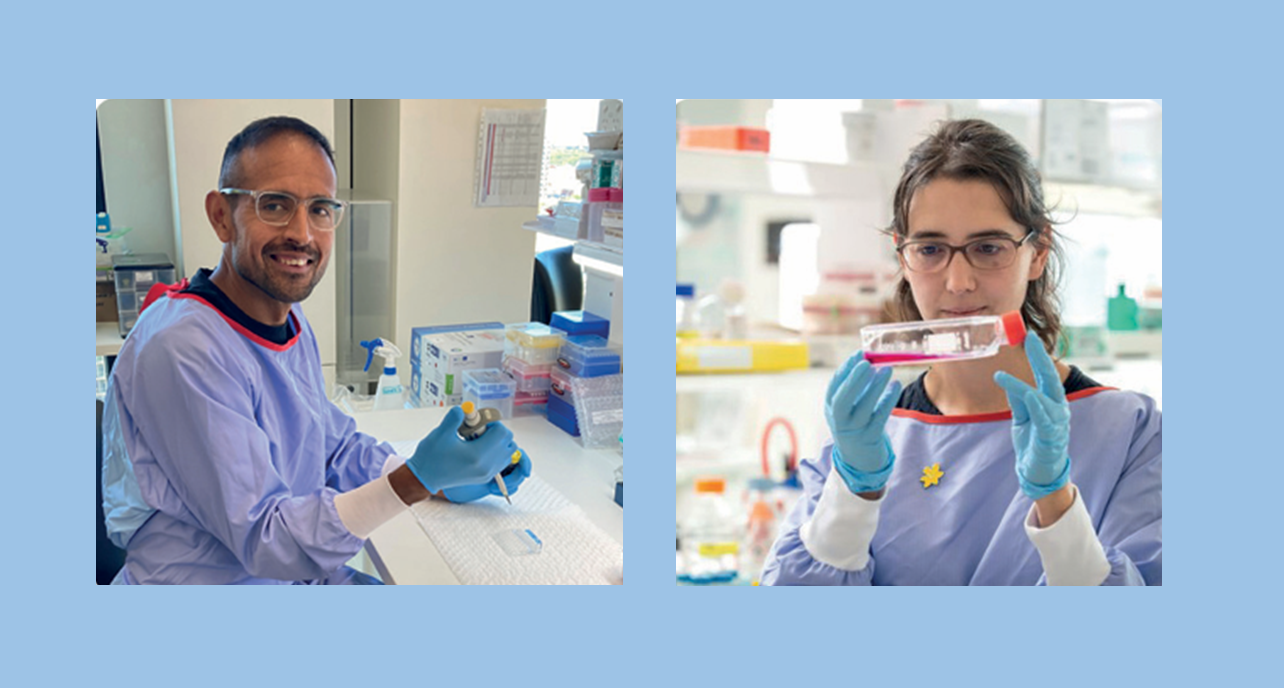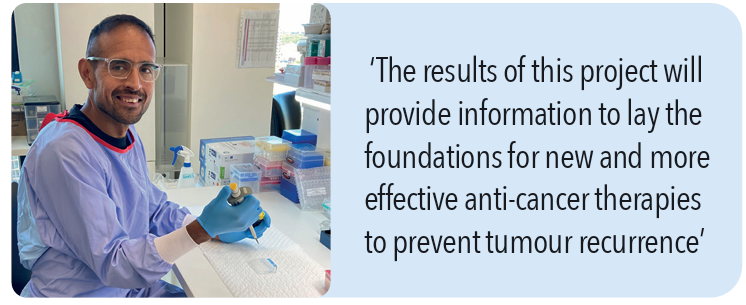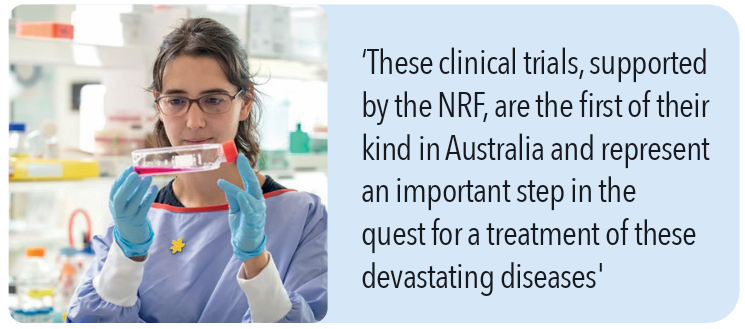$3.2M Federal funding win for NRF researchers
Researchers: Assoc Professor Guillermo Gomez and Dr Tessa Gargett

Research to find solutions to some of Australia’s biggest challenges
in health feature in the University of South Australia’s latest National Health and Medical Research Council (NHMRC) Investigator and Ideas research grants, collectively valued at around $15 million. This NHMRC Ideas grant will help multidisciplinary teams like those led by Assoc Professor Guillermo Gomez and Dr Tessa Gargett.
Assoc Professor Guillermo Gomez ($2.12 million) - Harnessing an unexpected new role of the CD47:SIRPA axis to target glioblastoma invasion
“This project will investigate how brain tumour cells reprogram to invade the surrounding healthy brain tissue and suppress immune activity.
“Our results will lay the foundations for new treatments for brain cancer that reduce tumour cell invasion and facilitate immunotherapy.”

Glioblastoma is the more frequent and lethal type of brain cancer. Invasion of glioblastoma tumour cells into the surrounding healthy brain tissue, escape surgery and are the main cause of therapy resistance and tumour recurrence in patients. This project will investigate the mechanisms by which tumour cells become invasive and exploit new vulnerabilities that we may find for the development of more effective therapies for glioblastoma.
The results of this project will provide information to lay the foundations for new and more effective anti-cancer therapies to prevent tumour recurrence in brain cancer patients. NRF seed funding allowed Dr Gomez, Robinson, Gargett and Gliddon to establish the resources, collaborations and critical preliminary data for this application.
Dr Tessa Gargett ($1.14 million) - Micro-targeting IL-2 delivery to remodel the glioblastoma microenvironment
''The diagnosis of a brain tumour is devastating for the patient, their family and their doctors because these aggressive tumours have limited treatment options and extremely poor survival rates, with the worst types being universally fatal''
“Fortunately we are in the midst of a technological revolution when it comes to medical science. This project will take the very latest developments in cell and gene therapy and apply them to the challenge of treating brain cancer.”

We are currently testing CAR-T therapy in glioblastoma and diffuse midline glioma patients. Our clinical trials, supported by the NRF, are the first of their kind in Australia and represent an important step forward in the quest for a treatment of these devastating diseases. However these tumours are aggressive and extremely difficult to treat and we predict that a successful therapy will require a combination of cutting-edge technologies. In this project we will bring a new gene technology to Australia that allows direct delivery of biological therapies into the brain tumour. We will combine this with our CAR-T cell therapy with the aim of achieving meaningful control of tumour growth.
In collaboration with the University of Cambridge, UK, we will develop a gene therapy that produces small molecules known as cytokines only within the brain tumour environment. Cytokines such as IL-2 provide growth and survival signals for CAR-T cells and should improve their function in the brain. We will test this in numerous preclinical models in combination with our existing CAR-T therapy. We will search for combinations and doses that achieve lasting control of tumour growth, without toxicity.
What you are hoping to achieve:
We hope that this project will identify the next candidate therapy for clinical testing to follow on from our current clinical trial program. Importantly the technology we will bring over from the University of Cambridge has the potential to be adapted to the delivery of a wide range of biological therapies that may help to treat glioblastoma. The project will also give us important information about how the tumour and immune system interact within the unique environment of the brain.




